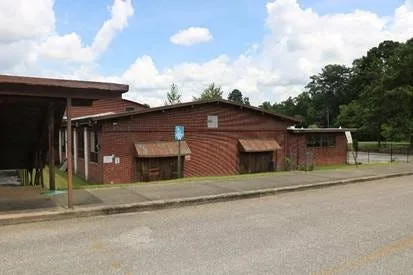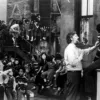
The campus of the segregated-era Havana Northside High School could become the home of Florida’s first state-funded Black history museum.
A proposal to use five acres of the campus of the school, 20 miles west of Tallahassee, was among nine accepted during a December meeting of the state task force created to create a Florida Museum of Black History.
The project is a creation of a bill (HB 1441) signed by Gov. Ron DeSantis in May after the Department of Education released new history standards that teach some enslaved people learned valuable skills while held in captivity.
The measure created a nine-member task force — appointed by DeSantis, House Speaker Paul Renner and Senate President Kathleen Passidomo, all white and Republicans — to recommend how the museum would be set up and what its mission will be.
A survey asks whether the museum’s site should incorporate amenities such as green space and gardens, if it is important to have space for performing arts, and whether the museum should serve as a place to engage in the civil discourse of history.
Rep. Bruce Antone, an Orlando Democrat, sponsored the bill that created the museum. He envisions a site about the size of a city block; that is, 100,000 square feet of exhibit space spread out among 10 halls that document the history of slavery and segregation and highlight African American accomplishments.
The bill lists seven specific topics to guide the collection of artifacts and stories including the “inherent worth and dignity of human life” and “the prevention of genocide.”
It also includes provisions that mandate a hall dedicated to the Tuskegee Airmen and all African American veterans who defended the United States, along with one for famed educator and civil rights pioneer Dr. Mary McLeod Bethune and the historically Black colleges and universities in the state.
After he shepherded the proposal to unanimous passage in the Legislature and DeSantis signed it, Antone turned in a 17-page outline to Renner that included a 10,000-square-foot entrance hall with life-size statues and interactive displays.
“I don’t think Black folks want to have a little museum,” Antone told the Florida Politics news site in September. “We need something we can be proud of.”

Nine communities now seek to host the museum. They are:
- Amelia Island
- Daytona Beach
- Havana
- Jackson County
- Opa-Locka
- Panama City
- St. Johns County
- St. Petersburg
- Sarasota
Each touted their connection to the African American story in Florida.
The Panama City proposal highlighted how the Bay County community is the only northwest Florida City on the U.S. Civil Rights Trail.
Sarasota boosters noted it is home to the Florida Black Heritage Trail, which includes Newton, America’s oldest incorporated Black town.
A proposal from St. Johns County boasted the northeast county is a world-class African American heritage destination with landmarks dating to the Reconstruction and Jim Crow eras.

The Havana Community Development Corporation (CDC) proposes building the museum on five acres of what was until 1970 a Black-only high school. Northside closed in 1972.
Havana anchors what was the slave belt of antebellum Florida, where the majority of residents in six counties were enslaved workers, according to the 1860 census.
Harold Knowles, the CDC’s CEO, said the nonprofit envisions a museum where a unique blend of African American and old South Confederacy history is presented “in an atmosphere of objective academic rigor, free of historic emotional overlays.”
The proposal includes space for Confederate statues and memorials that have been removed from public display in recent years.
He told the task force he realized the proposal would generate controversy.
Sen. Geraldine Thompson, an Orlando Democrat, chairs the task force and said the proposal came from an interesting perspective, but it appeared to create confusion about the museum’s purpose: “I’m sure you have a larger package and more details we can take a look at,” she said.
Meantime, the task force is asking the public for help in developing recommendations on how to proceed.
They are conducting an online survey that will be open through Feb. 29 to ask what the museum should look like, what should be on display, how the exhibits should be displayed and the kind of programs to offer.
The task force is then required to submit its recommendations to the governor’s office and the Legislature no later than July 1.
James Call is a member of the USA TODAY NETWORK-Florida Capital Bureau. He can be reached at jcall@tallahassee.com and is on X: @CallTallahassee.


